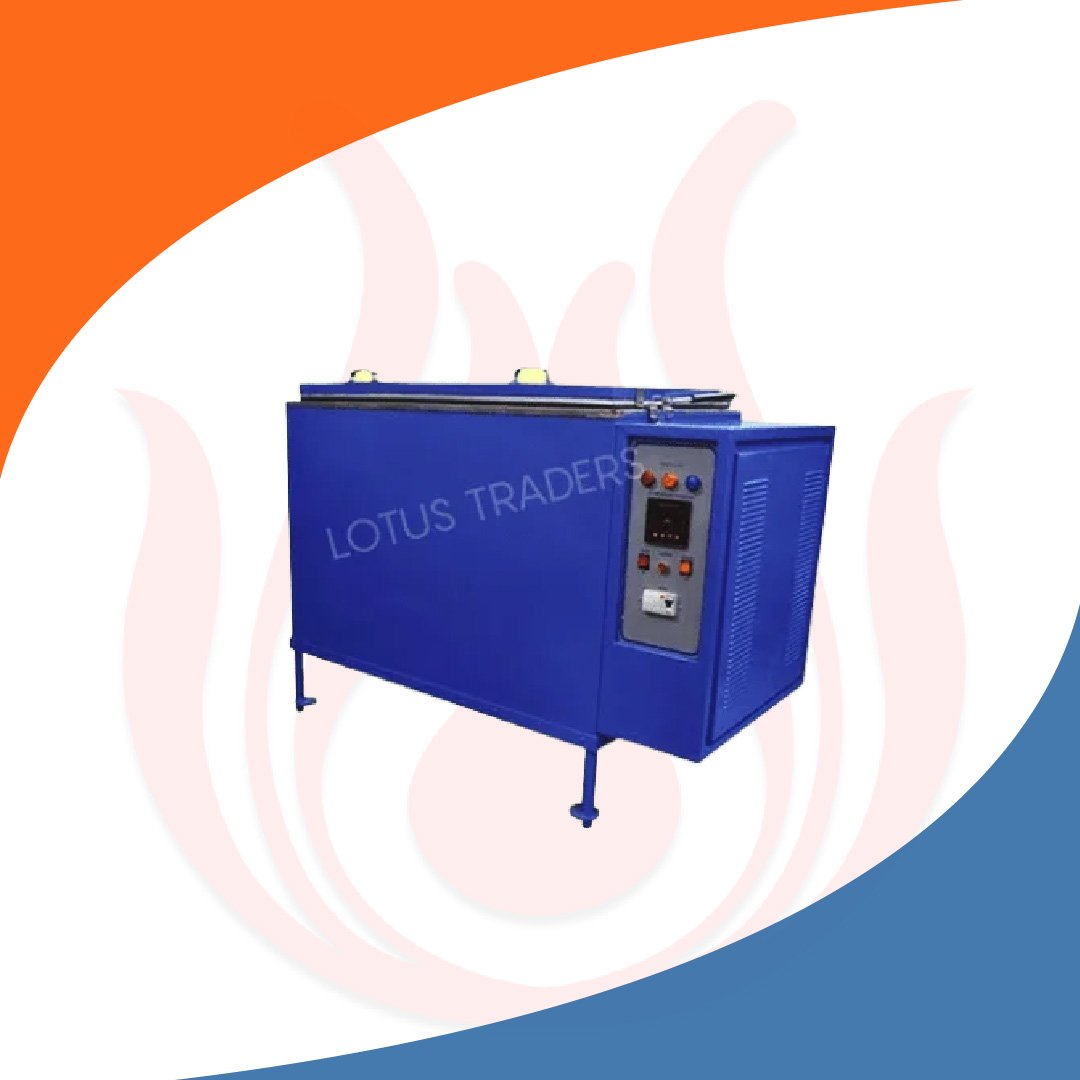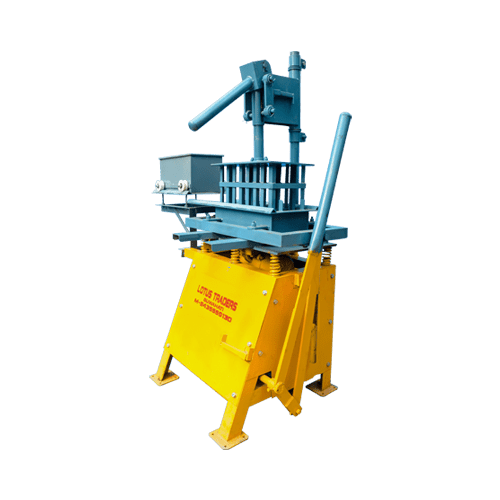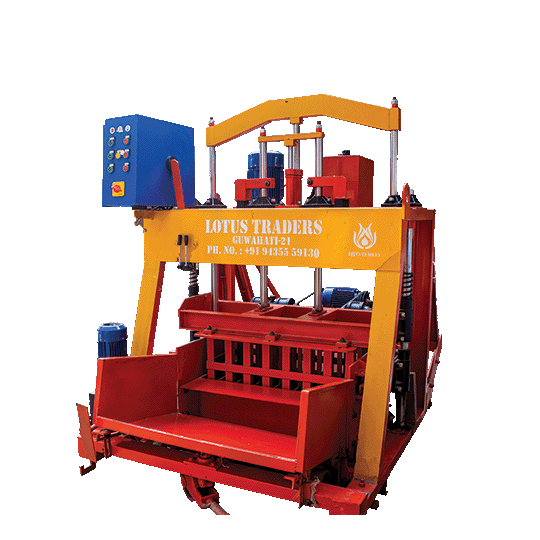Curing Tank
- High Quality Materials
- Compliance With Standards
- Clear Product Information
- Warranty & Support
- Product Testing & Certification
- Delivery & Policy
- Ask a Question
- Estimated Delivery: 5 Days – 10 Days
- DESCRIPTION
FEATURE | SPECIFICATION |
Temperature | 35 Deg C or 100 Deg C |
Size | 150 mm / 70.6 mm |
Material for Construction | Stainless steel |
Display | Digital |
Accuracy | +/- 1% |
Cycle | 24 Hour cycle |
Information About Curing tank:
What is curing tank?
An apparatus used to quicken the curing of concrete examples is a curing tank machine. Curing is the process of allowing concrete to properly harden by maintaining moisture content at a warm temperature. Concrete examples can be cured in as little as 24 hours by using curing tanks although they are normally cured in water for 28 days.
Curing tanks are usually constructed with two walls and insulation to keep the temperature constant. They are often composed of stainless steel. They have thermostats and heaters to regulate the water’s temperature and they could also have circulators to make sure the water heats up evenly.
Concrete specimens are first put in molds and then submerged in the water bath while using a curing tank machine. After that, the water’s temperature is increased to the appropriate range which is normally between 55 and 100 degrees Celsius. After the specimens have been cured for the predetermined period of time, they are taken out of the moulds and put through a strength test.
Numerous industries such as construction, material testing and research, employ curing tanks. They are a crucial instrument for making that concrete specimens are correctly cured and satisfy the necessary strength requirements.
Key features of curing tank
In laboratories for material testing and construction, curing tanks are a necessary piece of equipment. They offer a regulated setting for concrete specimens to cure guaranteeing that they acquire their maximum strength and longevity. The following are some essential curing tank features:
· Temperature control: To speed up the cement’s hydration process and help it reach the right strength, curing tanks keep a steady temperature usually between 55 and 100 degrees Celsius.
· Double-walled curing tanks with insulation between the walls help to keep the temperature where it is intended and stop heat loss. By doing this, uniform curing conditions are maintained throughout the tank.
· Temperature control systems: To accurately regulate the water’s temperature, curing tanks are fitted with thermostats and heaters. Additionally, certain types feature circulators to provide even temperature distribution.
· Construction with stainless steel: Because stainless steel resists corrosion and is easy to clean, it is the material of choice for curing tanks. It is resistant to temperature changes and the hard conditions of submerged water.
· Specimen racks: To safely retain concrete specimens and keep them from contacting the tank walls or one another, curing tanks frequently have racks or shelves installed. This keeps the specimens safe and guarantees uniform cure.
· Water inlet and outlet valves: To make filling, draining, and water level maintenance easier, curing tanks are equipped with water inlet and outlet valves. This makes maintaining and cleaning the tank simple.
· Safety features: In order to reduce electrical risks, curing tanks may have ground fault circuit interrupters (GFCIs) and overheat protection.
· Different capacities and sizes: To meet the needs of diverse specimen sizes and testing specifications, curing tanks come in a range of sizes. 50 to 1000 liters are typical capacities.
Aside from these essential elements, some curing tanks could have more sophisticated features like data logging, digital temperature controllers and remote monitoring choices. The precision and effectiveness of the curing process are improved by these aspects.
Benefits of Curing Tank
The building and materials testing sectors can profit greatly from the use of curing tanks. A few of the main benefits are as follows:
· Curing tanks speed up the curing process considerably as compared to more conventional techniques like air or water curing which take longer to cure concrete specimens. Concrete strength and durability tests can now be completed more quickly as a result.
· Ensuring adequate hydration of cement and preventing premature drying are made possible by the regulated environment that curing tanks offer which is characterized by a constant temperature and humidity. As a consequence, the concrete specimens become stronger and more durable.
· Increased Durability and Strength: Concrete specimens that have been properly cured show increased tensile and compressive strength as well as resistance to elements like freezing and thawing cycles. This enhances the general durability and strength of concrete constructions.
· Decreased Shrinkage and Cracking: Concrete specimens with carefully regulated curing conditions exhibit less shrinkage and cracking which results in fewer flaws and a more homogeneous appearance. For applications involving aesthetics and structural integrity, this is especially crucial.
· Reliable Outcomes: Curing tanks guarantee uniform curing circumstances for every specimen, removing fluctuations and augmenting the dependability of examination findings. This is essential for maintaining quality control and fulfilling concrete strength specifications.
· Enhanced productivity and efficiency in laboratories are achieved by expedited curing and better test findings which simplify procedures. This can shorten project durations and save expenses.
· Safety and ergonomics: Curing tanks minimize the danger of accidents and encourage ergonomic working conditions by eliminating the necessity for physical handling of water-soaked specimens.
· Adaptability and Versatility: Curing tanks are adaptable for a range of testing applications since they can hold specimens of varying sizes and forms. Certain models have features that can be adjusted to meet certain testing needs.
· Durability and Minimal Maintenance: The curing tanks stainless steel construction guarantees long lasting functionality and minimal maintenance requirements.
· Conformity with Standards: Concrete curing tanks fulfill or beyond industry norms and requirements guaranteeing test findings validity and adherence to construction rules.
Uses of curing tank
Curing tanks are widely used for many different applications in the building and materials testing industries such as:
· Curing Concrete Specimens: The main purpose of curing tanks is to quicken the curing of concrete specimens which are usually concrete cylinders and cubes. The right cement hydration and the growth of concrete strength depend on curing.
· Evaluating Concrete Strength: Concrete specimens are ready for strength testing using curing tanks. Data on the compressive strength, tensile strength and other mechanical characteristics of concrete are accurate and trustworthy when derived from specimens that have been properly cured.
· Concrete Production Quality Control: Curing tanks are used in quality control labs to make sure that batching plant-produced concrete satisfies the required standards for strength and durability.
· Investigation of the impact of various cement formulations, admixtures and curing conditions on concrete qualities is done in research and development laboratories using curing tanks.
· Testing the materials: Curing tanks can also be used for the testing and assessment of other concrete related materials such as paving stones, mortar and grout.
· Curing Epoxy and Resin Specimens: Epoxy and resin specimens can be properly polymerized and given the necessary physical qualities by curing them at regulated temperatures using customized curing tanks.
· Accelerated Curing of Other Materials: Depending on the unique curing requirements of each material such as adhesives, sealants and composites, curing tanks can be utilized to speed up the curing process.
· Preserving Uniform Curing Conditions: Curing tanks offer a regulated setting with constant humidity and temperature, removing fluctuations and guaranteeing the repeatability of test outcomes.
· Increasing Productivity and Efficiency: Curing tanks expedite the curing process and cut down on the amount of time needed for testing and assessment which increases lab productivity and efficiency.
· Ensuring conformity with Standards: Curing tanks help meet or surpass industry standards and requirements for curing ensuring the validity of test results and conformity with construction codes.
How curing tank works?
A curing tank helps concrete specimens cure faster by offering a regulated environment with constant humidity and temperature. Below is a summary of the operational principle:
· Specimen Preparation: Concrete specimens often concrete cubes or cylinders are cast in moulds and allowed to initial set before being moved to the curing tank.
· Water Immersion: The specimens are submerged in the curing tanks water with extreme caution so as not to come into contact with one another or the walls.
· Temperature Control: The water temperature is raised to the desired range usually between 55 and 100 degrees Celsius by activating the heating system of the curing tank.
· Controlled Hydration: The main component of concrete, cement, hydrates more quickly at the higher temperature. Hydration is a chemical reaction when cement combines with water generating a paste that binds the aggregate materials (sand and gravel) together.
· Strength Development: The concrete specimens get stronger and harder as the hydration process goes on. Because the temperature is regulated, the specimens experience homogeneous hydration and strength development.
· Curing Time: Depending on the specimen size, kind of cement and required strength level, different curing times apply. 24 to 72 hours are typical curing timeframes for rapid curing.
· Moisture Control: To stop the concrete specimens from drying out too soon, the curing tank keeps a high relative humidity of about 95%. This guarantees sustained hydration and the growth of strength.
· Uniform Curing: The insulation and circulators included in the design of the curing tank guarantee even distribution of temperature and humidity inside the tank. This removes variation and guarantees uniform curing circumstances for every specimen.
· Watching and Regulating: During the curing process, the control system of the curing tank keeps an eye on and regulates the appropriate humidity and temperature levels. In order to monitor and document curing conditions, several models provide data logging capabilities.
· Specimen Removal: Following the completion of the curing period, the concrete specimens are carefully taken out of the curing tank and ready for examination or additional curing procedures.
Conclusion
Concrete specimens are facilitated in their curing or hydration process by the use of a curing tank, a specialized container used in construction and materials testing. In order to achieve the best strength, durability and crack resistance; curing is an essential step in the preparation process for concrete.
Curing tanks are typically constructed from sturdy materials like steel or plastic and are intended to provide a regulated environment in which concrete specimens can develop. These tanks are available in multiple sizes to suit varying sample dimensions.
After concrete specimens like cubes, beams or cylinders are cast, they must be kept at a constant temperature and shielded from moisture loss for a predetermined amount of time. This controlled environment is provided by the curing tank which frequently has enough water in it to completely submerge the specimens. In order to control the curing temperature and minimize the risk of cracking, certain tanks may contain insulation or temperature controls.
By encouraging hydration—the chemical reaction between water and cement—proper curing in these tanks enables the concrete to achieve its desired strength and characteristics. In practical applications, it helps maintain the concrete’s durability and structural integrity by preventing surface drying, shrinkage and cracking.











